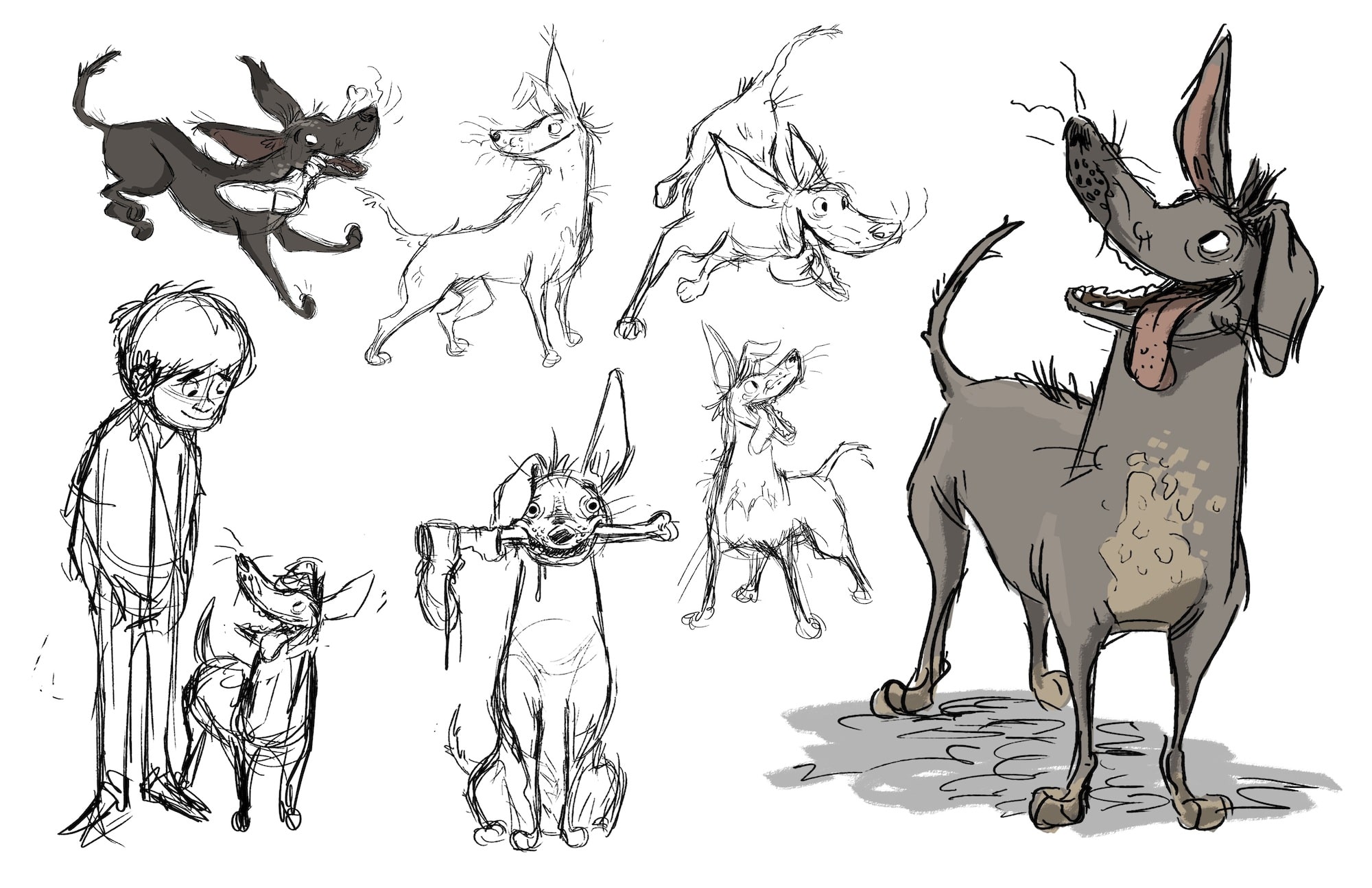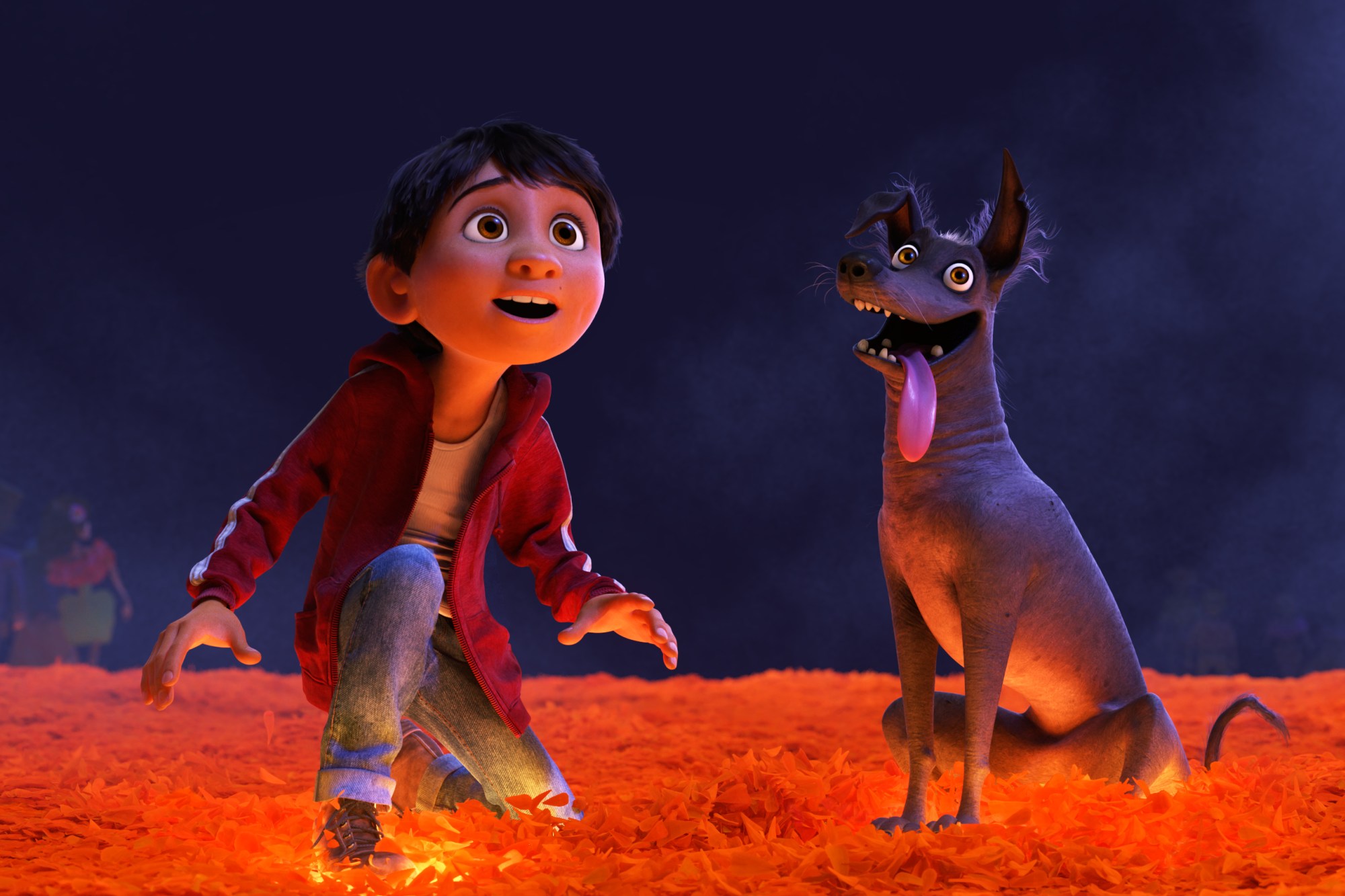Disney-Pixar’s 19th animated feature film, Coco, arrives in less than three months and it’s already whetting appetites with its color, whimsy and characters. The story of a young boy and his dog who travel to the Land of the Dead has been dispersing pieces of information very deliberately as its ad campaign begins, including our exclusive look at the character of Pepita, an alebrije, just a few days ago. At a recent press event for the movie, the Pixar animators took time to give more information on the loveable Xolo dog, Dante, who journeys to the Land of the Dead alongside his trusted partner, Miguel (voiced by Anthony Gonzalez) and gets into hijinks.
Inspired, though as different as they come, by the dogs in Pixar’s Up and Disney’s Lady and the Tramp, Dante represents all that’s fun and scrappy about the Xolo (short for Xoloitzcuintli or Mexican hairless dog). Character supervisor Christian Hoffman explained that the Xolos are “ancient dogs referenced back to 3500 years” that safeguard “the home from evil spirits and intruders” but are more often seen now as “big, snuggly hot water bottles,” much like the St. Bernard. Both the Aztec and Toltecs considered the breed to be sacred. In ancient legend, a Xolo would be needed to ferry souls from the world of the living to the afterlife. Those who developed the character had their work cut out for them, kind of. Pixar’s research process is on par with “edu-tainment” so animators spent time watching YouTube videos of dogs and asking Xolo owners to bring their dogs in for reference. Digital sculpture took a little less than four months on Dante while actual articulation took around six months.

Unlike today’s modern dogs, animated or living, Dante the Xolo was a challenge for the animators, who enlisted some clever techniques to include all the elements that make the breed unique. Using drawings and clay sculptures the animators were able to “get [Dante’s] proportions…relative to Miguel,” Hoffman says. Size is easy, but how does one convey the Xolo’s namesake hairlessness, the result of centuries of evolution? For Hoffman, “hairless doesn’t necessarily mean hairless.” The animation team centered most of Dante’s hair around his head and ears, making it “scraggly and scruffy, and a little gross.” Leaving the rest of him hairless, the team was able to play up Dante’s skin texture and wrinkles, and showcase the way his skin moves over his body.
Directing animator Nick Rosario says the wrinkles on Dante’s body helped them “push the cartooniness” of the character. “There’s a lot of great deformation going on,” he says. Yet, in spite of the dog’s unconventional attractiveness, the animators wanted it know that Dante wasn’t inspired by previous Ugliest Dog contest winners. The reference to Tramp in Lady and the Tramp is apropos. “Dante is a street dog [so] he’s got a lot of bumps and scratches,” according to Hoffman. Having a character who’s seen some lumps helped the painters get creative with how Dante is colored. You’ll also notice that Dante’s ears have rips and breaks in them, further proof of his rough time on the streets. He also doesn’t have the training of most house dogs so “he’d never sit up on his hindquarters” according to Rosario.

Audiences’ first introduction to the character of Dante was in the short film of the same name where the character gets in quite a bit of trouble with his tongue. Xolos are well-known for having dental issues and missing teeth which Hoffman and Rosario saw as a method of having cartoon-level fun with the character. On the surface Dante “is a puppy in an adult [dog] size body,” so Rosario and crew felt that gave them the freedom to have fun with his tongue. Based on the scenes in the Dante short we know the dog’s tongue has a lasso-like effect that traps him in some sticky situations. Rosario found “these nice ‘S’ and ‘C’ shapes” within it that he utilized to provide a “glimpse into his character,” similar to Finding Dory’s octopus character, Hank. Chief creative officer of Pixar John Lasseter encouraged Hoffman and Rosario to go even further with the character and his new character trait, so Rosario and Hoffman pushed Dante’s “funny and charming” behavior to near-exaggerated levels. As Rosario says, “dogs can take a licking and keep on ticking, and that’s what we did with Dante.”
Other than Dante and Miguel, Coco boasts an all-star cast that includes the voice work of Gael Garcia Bernal, Benjamin Bratt, Edward James Olmos and Jane the Virgin MVP Jaime Camil.
Coco hits US theaters on November 22, 2017.







